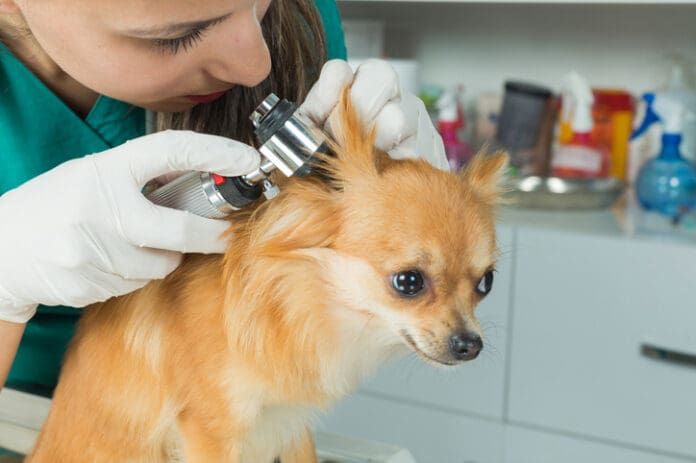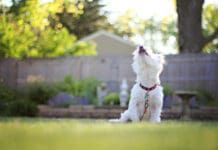Dr. Hershman realized that when an ear is not inflamed and not painful but full of debris or tarry exudates from a yeast or bacterial infection, flushing the ear makes sense. “If you don’t flush it out but keep applying medication on top of the debris,” she says, “you’re never going to cure the problem. But I also learned that flushing the ear is an art. You can’t simply fill the ear with otic solution and expect it to flow out by itself, taking all the debris with it. Because the dog’s ear canal forms a right angle, you just can’t get the liquid out unless you suction it gently with a bulb syringe or some kind of tube with a syringe attached.”
Flushing the ears, says Dr. Hershman, is one of the most important techniques you can learn for keeping your dog’s ears healthy. “They don’t teach this in veterinary school,” she says. “It’s something people learn by experience.”
When should the ears not be flushed? “If they’re painful, ulcerated, or bleeding,” she says, “or if there’s slimy, slippery pus in the ear or a gluten- ous, yeasty, golden yellow discharge. In any of these cases, flushing is not recommended. But if the ears are not inflamed and are simply waxy or filled with tarry exudates, flushing works well.”
The procedure begins with a mild, natural, unscented liquid soap from the health food store. Place a few drops of full-strength soap in the ear, then thoroughly massage the base of the ear. The soap is a surfactant, and it breaks up debris that’s stuck to the sides of the ear canal. From a bowl of water that’s slightly warmer than body temperature, fill a rubber bulb syringe or ear syringe, the kind sold in pharmacies for use with children or adults. Place the point of the syringe deep down in the soap-treated ear, then slowly squeeze the syringe so it releases a gentle stream of water.
“By the first or second application,” says Dr. Hershman, “you should see all kinds of debris flowing out. It’s like a waterfall. At the end of each application, hold the syringe in place so it sucks remaining water and debris up out of the ear canal. Then empty the syringe before filling it again.”
For seriously debris-filled ears, Dr. Hershman repeats the procedure three or four times, then she lets the dog shake his head before drying the ear with cotton balls and Q-tips. “I look for blood or debris,” she says, “and I check inside with the otoscope. If there’s still a lot of debris, I put more soap in, do a more vigorous massage, and flush it a few more times.
“An ear flush can be traumatic if the ear is inflamed,” she warns, “and occasionally there will be an ulcer or sore that you don’t know is there and it will bleed. That’s why you have to be careful about how you do this. You have to be vigorous but not aggressive. You don’t want to make the ear more inflamed, painful, or damaged than it was to begin with.”
After flushing the ear, Dr. Hershman applies calendula gel, a homeopathic remedy. “I put a large dab in each ear and ask the owner to do that once or twice a day for the next three days. The gel is water-soluble and very soothing. Calendula helps relieve itching and it stimulates the growth of new cells, so it speeds tissue repair.”
If the discharge in the dog’s ear is yeasty or obviously infected, Dr. Hershman skips the ear flush, instead using the following treatment.
For more on diagnosing and treating ear infections, purchase Ear Infections by Whole Dog Journal.






